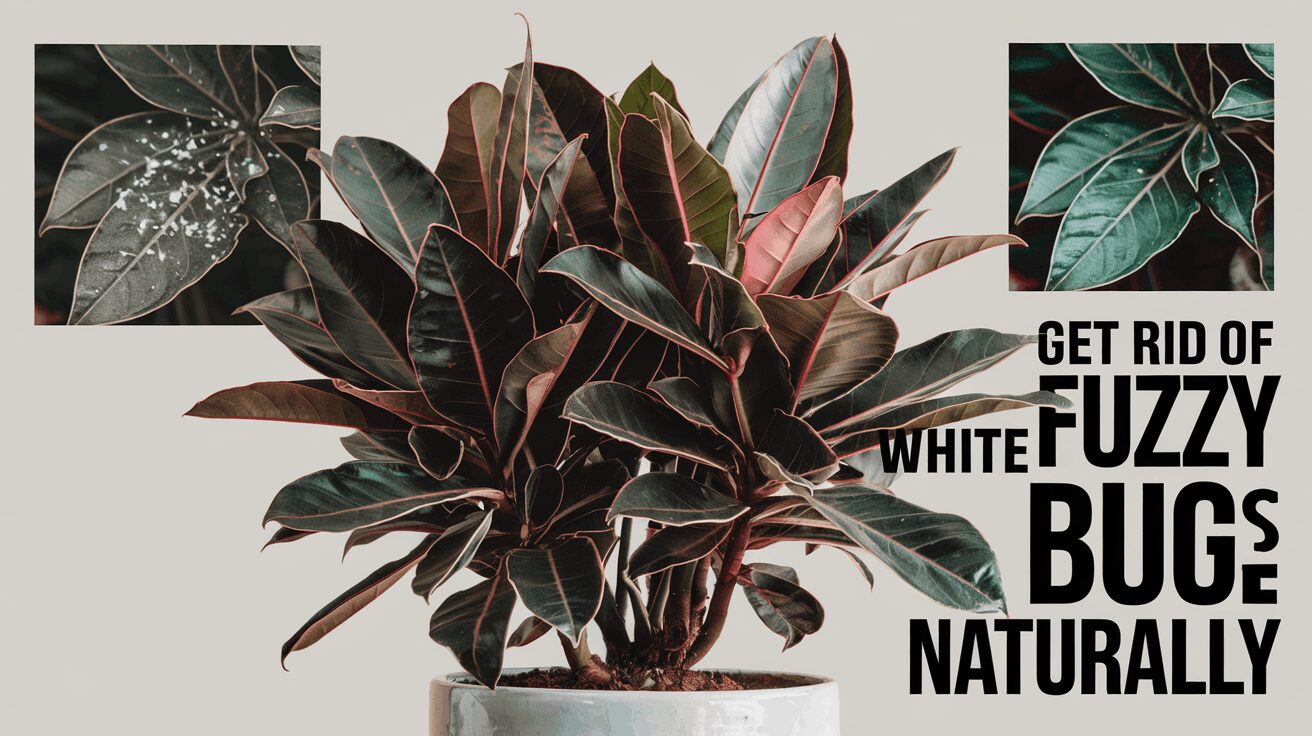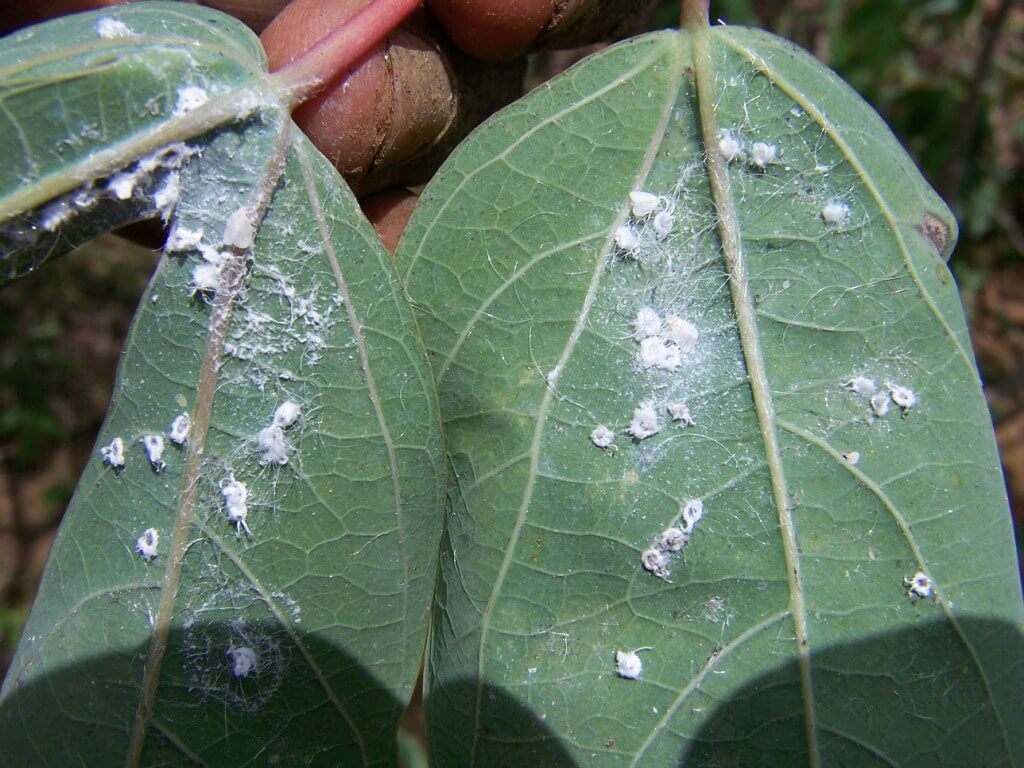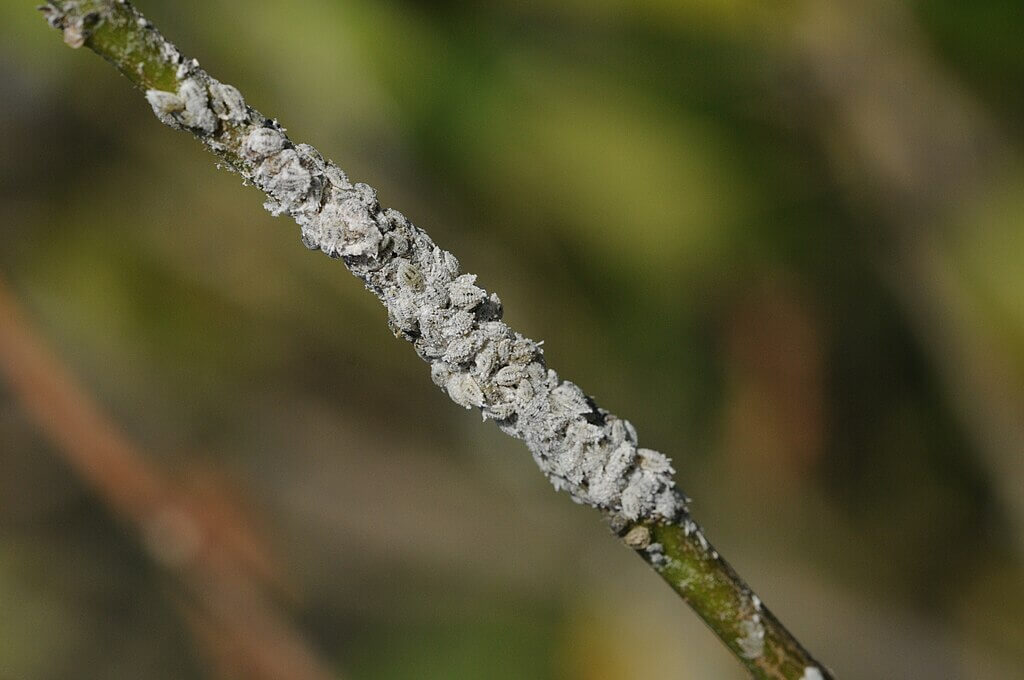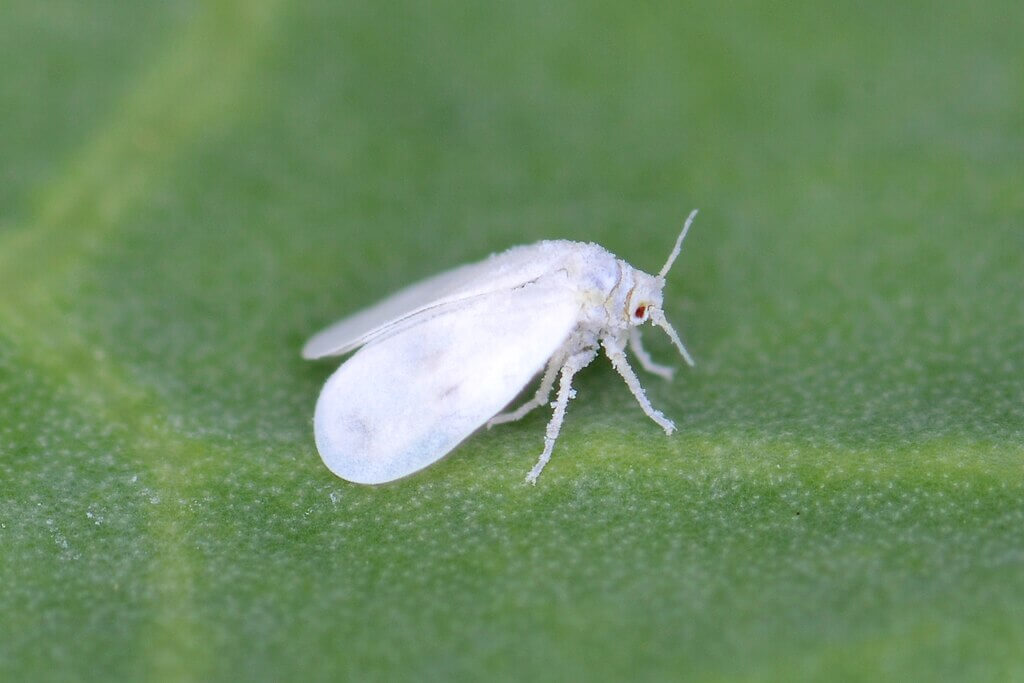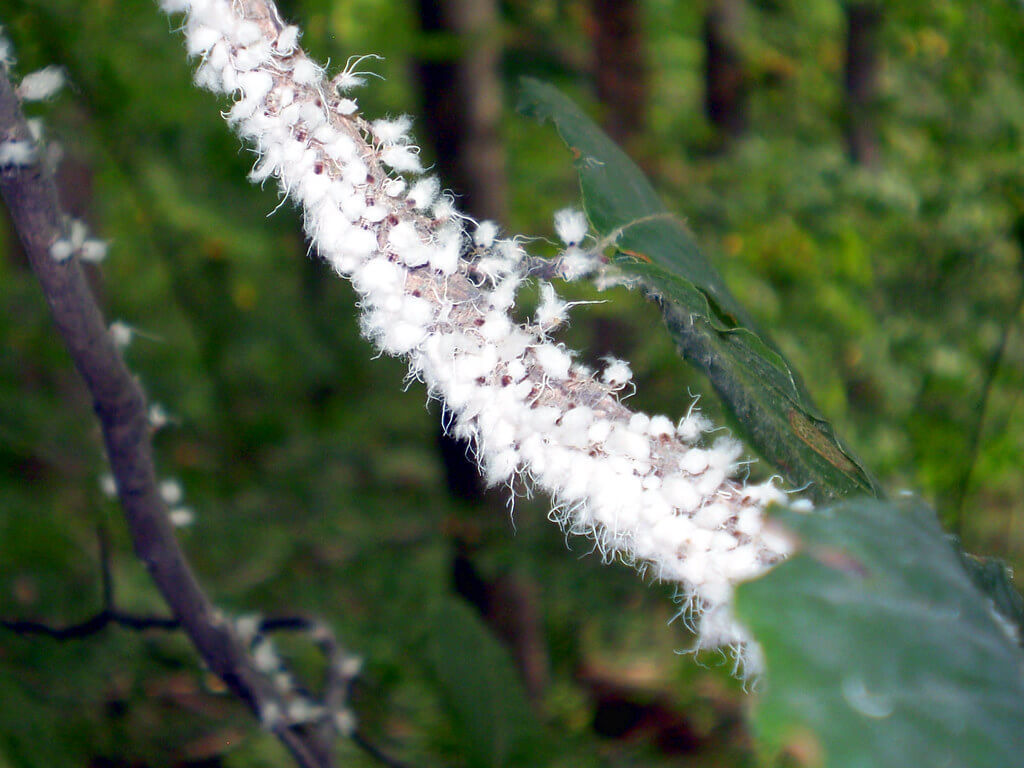White fuzzy bug on plants can be a real pain. We’ve all been there. One day, you’re admiring your flourishing plants, and the next, you spot some strange, fuzzy white bugs clinging to your leaves. If you’re anything like me, you probably panicked for a second.
I remember my first encounter with these little guys—I thought my plants were doomed! But don’t worry, I've learned a lot since then. Let’s dive into the world of tiny white bugs on plants and break it all down.
What Are Tiny White Bugs?
Let’s be real—no one likes seeing bugs on their plants. But not all bugs are the same. If you’ve spotted tiny white, fuzzy bugs hanging around, you're probably dealing with mealybugs, whiteflies, or aphids.
They’re super tiny (some smaller than a pinhead!) and, though they look harmless, they can cause a ton of damage if left unchecked. I remember mistaking them for dust at first—what a rookie mistake!
These pests tend to gravitate towards indoor plants, especially succulents and houseplants, but outdoor plants like tomatoes aren’t safe either. The worst part? They multiply fast. If you don’t deal with them quickly, you could be looking at an infestation. Not fun.
Read Next:
Types of White Fuzzy Bugs on Plants
I’ve had my fair share of battles with these white fuzzy bug on plants, and they’re not all the same. Let me break it down for you so you can figure out which tiny invader is taking over your greenery.
Mealybugs:
These are probably the most common “white fuzzy bug on plants” you’ll come across. They love plants with soft leaves and can be found in both indoor and outdoor settings. They have this cottony, white appearance that looks like tiny pieces of fluff stuck to your plant.
Whiteflies:
These guys are sneaky. They may look like mealybugs at first, but get too close, and they’ll fly off, leaving you confused. They hide under the leaves and suck the sap out of your plant.
Aphids:
While not as fuzzy as the first two, aphids can appear white and are also common culprits. They gather in large groups and can really mess with your plant’s health. I once had a whole pot of mint plants decimated by these guys because I wasn’t paying attention!
Knowing what you’re dealing with is half the battle. Once you’ve identified the pest, you can figure out the best way to get rid of it.
Life Cycle of White Fuzzy Bugs
Let’s take a moment to appreciate the circle of life. These bugs, unfortunately, are born to multiply. Mealybugs, for instance, lay hundreds of eggs in cottony masses on your plant.
These eggs hatch, and the young bugs (called crawlers) begin to feed on plant sap immediately. That’s why it can feel like they show up out of nowhere and take over so fast.
Whiteflies also lay their eggs on the undersides of leaves, and within a couple of days, those eggs hatch into sap-sucking monsters. I know this sounds like a nightmare, but the good news is that understanding their life cycle can help you disrupt it and win the battle.
White Fuzzy Bug Damage
Here’s the not-so-fun part: white fuzzy bugs can do some real damage. And fast. These bugs feed on the sap in your plants, essentially draining the life out of them.
Over time, your plant might look yellow, wilted, or just generally sad. I once ignored a small infestation (big mistake!) and woke up to a plant that was beyond saving. Lesson learned!
Another sign of white fuzzy bug damage is the presence of sticky stuff on your plants, called honeydew. This sugary liquid can lead to mold growth, making things even worse. If you notice honeydew or black sooty mold, it’s a clear sign that you’ve got a bug problem.
Read Next:
How Do You Get Rid of White Fuzzy Bugs?
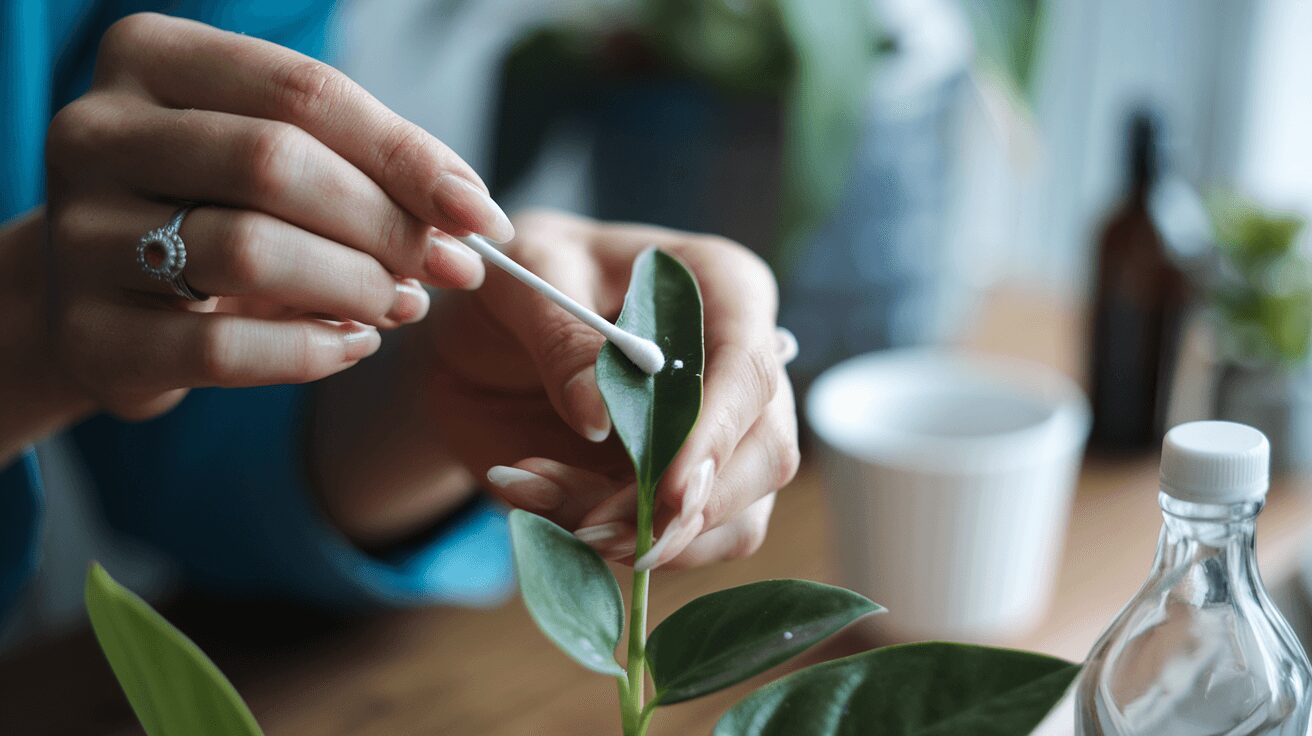
Alright, now that you know what you’re up against, let’s talk solutions. The good news is, you can get rid of white fuzzy bug on plants without resorting to hardcore chemicals (though I’ve had to go that route once or twice when things got really bad). Here are some methods I’ve tried that actually work:
- Manual Removal: I know, it sounds tedious, but sometimes the simplest solution is the best. Grab a cotton swab, dip it in rubbing alcohol, and dab it directly on the bugs. The alcohol kills them on contact. I remember spending hours doing this on my succulents one summer—it was like plant surgery!
- Neem Oil: This is one of my favorite go-to remedies. Neem oil works wonders as a natural pesticide. Just mix a few drops with water in a spray bottle and mist your plants. Not only does it kill the bugs, but it also prevents new ones from hatching.
- Insecticidal Soap: You can buy this at most garden centers, or you can make your own at home. It’s a gentle option that won’t harm your plants, but it’s strong enough to take care of those pesky white fuzzy bugs. I like to use it when I’m dealing with a larger infestation.
- Introduce Predatory Insects: If you’re dealing with an outdoor infestation, you can buy predatory insects like ladybugs or lacewings to eat up those white fuzzy bugs. You can also introduce garden spiders. It’s like nature’s own pest control system. I tried this once in my garden, and while it takes some patience, it’s so satisfying to see the natural balance restored.
How to Prevent a Tiny White Bug Infestation
When it comes to preventing tiny white bugs from taking over your plants, consistency is key. Prevention might not be as exciting as watching your plant flourish, but trust me—it's worth the effort. Here’s my step-by-step guide to keeping your plants pest-free.
1. Inspect New Plants
Before introducing any new plants into your home or garden, always inspect them carefully. Tiny white bugs often hitchhike on new plants, so check the undersides of the leaves and stems. I once skipped this step (big mistake!), and within a week, my favorite houseplant was crawling with mealybugs.
- Tip: Use a magnifying glass to spot any small bugs you might otherwise miss.
2. Quarantine New Plants
Even if your new plant looks healthy, isolate it from your other plants for at least two weeks. This helps you detect any pests that might be hiding before they spread. I made it a rule to keep new plants on a separate shelf or even in a different room.
- Pro Tip: Place your quarantined plant on a white sheet or paper. This makes it easier to spot any tiny bugs that might fall off.
3. Maintain Plant Health
Healthy plants are less likely to attract pests. Just like with us humans, stressed plants are more vulnerable to infections (or in this case, infestations). Keep an eye on the basics: water them consistently, provide the right amount of sunlight, and use good-quality soil.
- Bonus Tip: Overwatering can make your plants more appealing to pests. Let the soil dry out a bit between waterings, depending on the plant’s needs.
4. Keep Your Plants Clean
Regularly clean your plants’ leaves to remove dust and debris. White fuzzy bugs, like mealybugs, thrive in dusty environments, so keeping the leaves clean reduces their hiding spots. I like to use a soft, damp cloth to gently wipe down each leaf—think of it as a mini spa treatment for your plant.
- Tip: If you notice any sticky residue (honeydew), clean it immediately. It’s a sign that pests are already present.
5. Use Neem Oil as a Preventive Spray
Once a month, I spray my plants with neem oil as a preventive measure. It’s a natural pesticide that repels bugs before they even think about moving in. I started doing this after a friend suggested it, and it’s been a game changer.
- How to Use: Mix 1 teaspoon of neem oil with 1 liter of water, add a few drops of dish soap to emulsify, and spray it on your plants. Be sure to cover the undersides of the leaves, as this is where bugs like to hide.
6. Create Space Between Plants
It’s tempting to group your plants closely together to create a lush, green vibe, but this can lead to infestations spreading rapidly. By giving each plant some breathing room, you reduce the likelihood of pests jumping from one plant to another.
- Pro Tip: Space helps airflow too, which keeps your plants healthy and reduces mold growth (a pest magnet!).
7. Introduce Beneficial Insects
If you’re gardening outdoors, consider adding beneficial insects like garden spider, ladybugs or lacewings. These natural predators feed on tiny pests like aphids and mealybugs. I tried this with my outdoor vegetable garden, and it’s like having a little army patrolling your plants.
- Tip: Make sure you’re introducing the right insects for the type of pests you're trying to prevent.
8. Monitor Humidity
Some white bugs, especially mealybugs, love high humidity. For indoor plants, consider using a dehumidifier or improving air circulation to keep the environment less appealing to these pests. I learned this after I overwatered my plants and created a perfect breeding ground for pests. Who knew humidity could be such a bug magnet?
Read Next:
White Fuzzy Bug on Plants Treatment: My Go-To Process
Alright, let’s say you’ve got an infestation. Here’s the step-by-step process I follow to get rid of those bugs for good:
- Isolate the Affected Plant: This is critical, especially if you’ve got other plants nearby. Bugs spread fast, so you want to keep them contained.
- Spray with Neem Oil or Insecticidal Soap: I like to start with neem oil since it’s natural and effective. Spray the entire plant, paying extra attention to the undersides of the leaves where bugs like to hide.
- Wipe Down the Leaves: After spraying, take a damp cloth and gently wipe down the leaves. This helps remove any dead bugs and honeydew.
- Repeat Weekly: One spray won’t be enough. You’ll need to repeat this process weekly until you’re sure the bugs are gone.
Homemade Spray for Tiny White Bugs
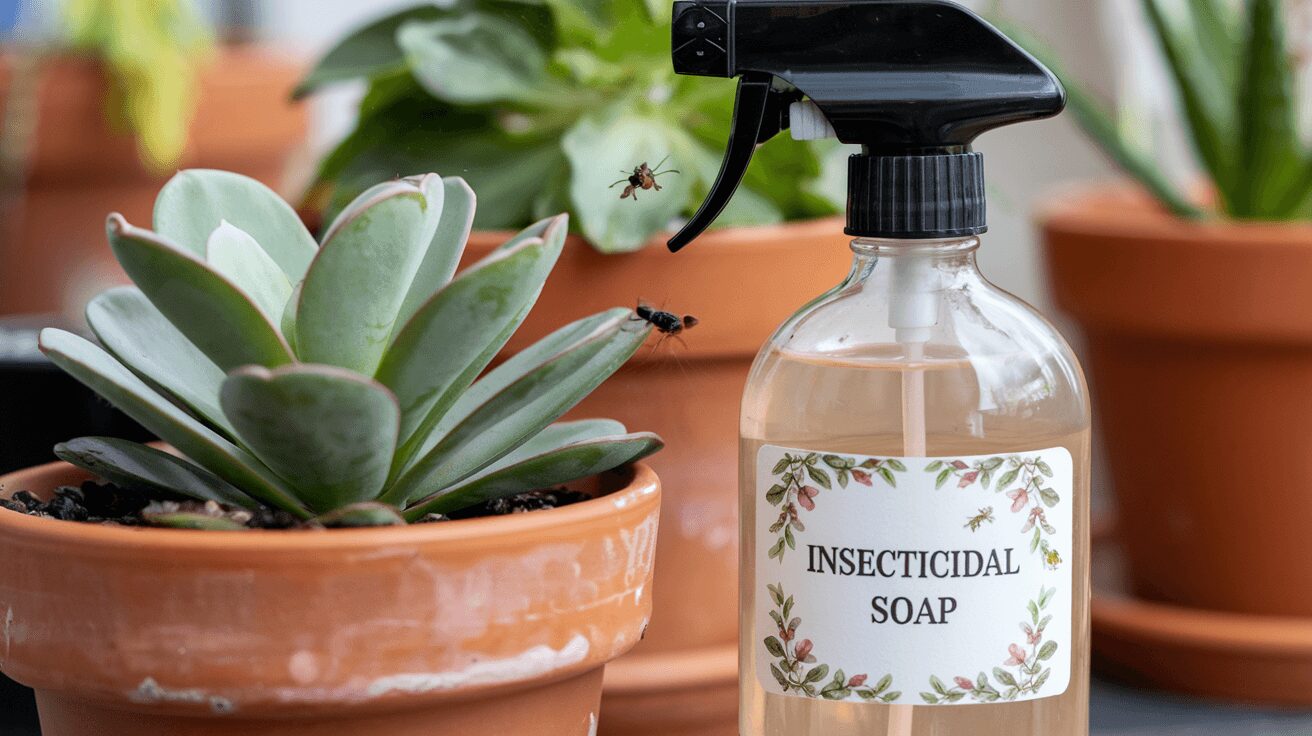
If you’re the DIY type (like me), creating your own pest spray is not only easy but also super satisfying. Plus, it saves you a trip to the garden center. Here’s my go-to homemade spray that’s effective against tiny white bugs like mealybugs, whiteflies, and aphids.
Ingredients:
- 1 tablespoon of liquid dish soap (unscented and gentle)
- 1 tablespoon of vegetable oil (optional but helps suffocate bugs)
- 1 liter of water
- 5-10 drops of neem oil (optional for added pest control)
Step-by-Step Guide:
1. Mix the Solution
In a spray bottle, combine 1 tablespoon of liquid dish soap with 1 liter of water. The soap breaks down the protective outer layer of the bugs, effectively killing them. If you’re dealing with a bigger infestation, add a tablespoon of vegetable oil to help suffocate the bugs.
2. Add Neem Oil (Optional)
For an extra kick, I like to add 5-10 drops of neem oil. It acts as a natural pesticide and works great at preventing the bugs from coming back.
3. Test on a Small Area
Before spraying your entire plant, test the solution on a small, inconspicuous area. Some plants can be sensitive, and the last thing you want is to damage your plant. I learned this the hard way when I fried a leaf on my favorite orchid by not testing first. Oops!
4. Spray the Affected Plant
Once you’re sure the plant can handle the spray, generously mist the affected areas. Pay special attention to the undersides of the leaves, as that’s where white fuzzy bugs like to hide.
5. Repeat Every Few Days
For best results, spray every 4-5 days until the bugs are completely gone. I usually do this for about two weeks to ensure I’ve eliminated all the pests.
6. Rinse the Plant
After a few hours, rinse the plant with clean water to remove any soap residue. This helps prevent leaf damage, especially for delicate plants.
Final Thoughts
White fuzzy bugs are a pain, but with a little patience and the right strategy, you can kick them to the curb. Trust me, I’ve had my fair share of battles with these pests, and while it’s never fun, there’s nothing more satisfying than seeing your plant bounce back.
Whether you’re dealing with mealybugs, whiteflies, or aphids, the key is to act fast and stay consistent.
So, if you’re staring at your plant right now, wondering where to start, don’t stress—I’ve been there too. Just follow the steps above, and you’ll be back to enjoying your happy, healthy plants in no time. Got any tips of your own? Drop them in the comments! I’m always on the lookout for new tricks.
External resources: for more tips on how to get rid of white fuzzy bugs on your plants, check out Terminix and Instructables
FAQ
How to get rid of white fuzz on plants?
To get rid of white fuzz (usually caused by mealybugs or fungus), start by wiping down the affected leaves with a damp cloth or cotton swab dipped in rubbing alcohol. You can also use a homemade spray with dish soap and water or a neem oil solution to kill the pests. Repeat the treatment weekly until the fuzz is gone.
How do you get rid of mealybugs?
To get rid of mealybugs, isolate the affected plant to prevent spreading. You can manually remove them with a cotton swab soaked in alcohol or spray the plant with neem oil or insecticidal soap. Be sure to repeat the treatment every 4-5 days until the infestation is gone.
Are mealybugs harmful?
Yes, mealybugs are harmful to plants. They suck the sap from leaves and stems, causing the plant to weaken, yellow, and even die if untreated. Mealybugs also produce a sticky substance called honeydew, which can lead to mold growth.
Do white fuzzy bugs spread quickly?
Yes, white fuzzy bugs, like mealybugs and whiteflies, reproduce rapidly and can spread from plant to plant in a matter of days. They often hide under leaves, making them hard to spot until the infestation becomes severe. This is why early detection and treatment are essential.
What plants are most susceptible to white fuzzy bugs?
Indoor houseplants, especially succulents, ferns, and tropical plants, are highly susceptible to white fuzzy bugs. Outdoor plants like tomatoes, peppers, and herbs can also attract these pests. Keeping plants healthy and inspecting them regularly helps prevent infestations.
Can white fuzzy bugs infest outdoor plants too?
Yes, white fuzzy bugs can infest both indoor and outdoor plants. Outdoor plants like vegetables and ornamental flowers are particularly at risk during warmer months when pests are most active. Regular inspection and early treatment can prevent them from spreading.

